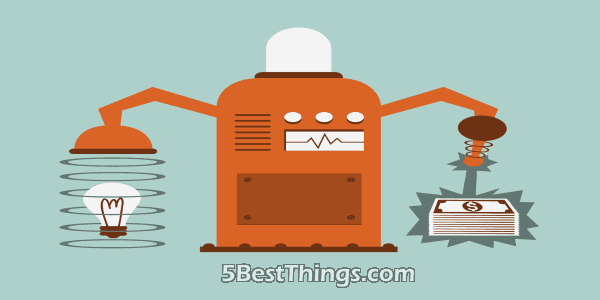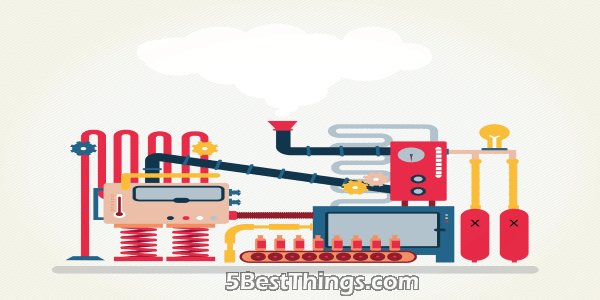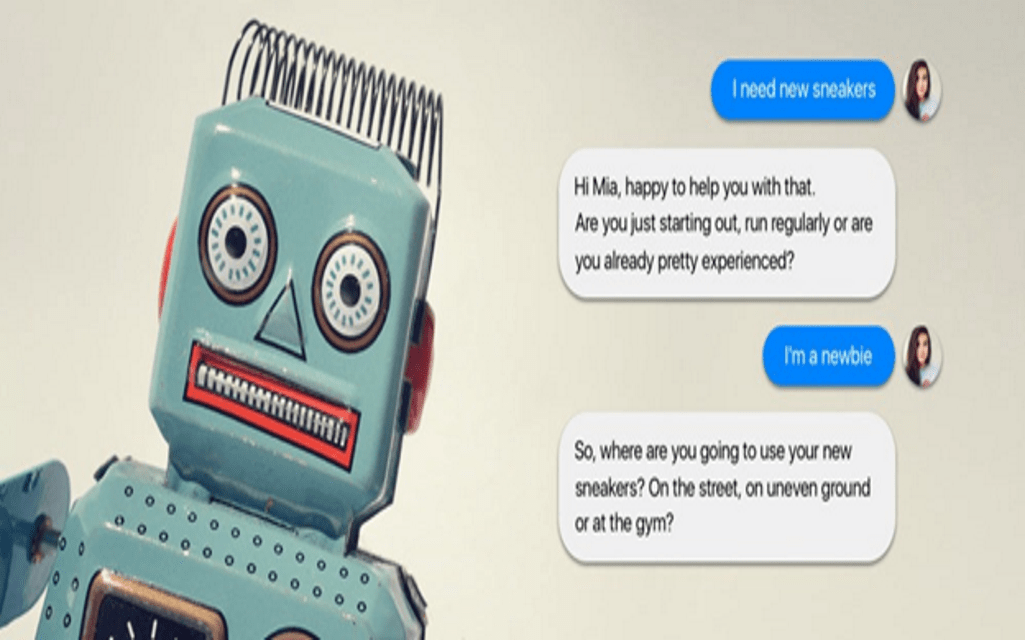Ecommerce is on the rise. According to the U.S. government, 53% of global internet users made an online purchase in 2016, and spent approximately $1. However, there’s still a lot of room for improvement, and some forecasts predict that U.S. consumers alone will spend as much as $632 billion in 2020. There are several factors that fuel the growth of ecommerce, and the most prominent are a growing number of mobile devices and recent developments in the field of AI.
Many consumers prefer brick-and-mortar stores because there are shop assistants that can help them with all sorts of things, but now ecommerce strike back with chatbots – automated personal assistants that are programmed to give answers to frequently asked questions. They have become indispensable for any converting ecommerce website.
Designed to Convert

Almost anybody can create a fully functional website, and there are tons of free tools and templates that enable even a person with modest tech skills to open an online store. However, when it comes to design, it’s a whole different story. Namely, if you want your online business to thrive, you need to have a well-designed, user-friendly, and perfectly-optimized website. A recent survey has found that 77% of digital agencies identified poor website UX as the most significant weakness.
There’s no doubt that user experience can profoundly impact conversion rates, and there’s a lot of evidence that can corroborate this claim. For example, slow load times are responsible for high bounce rates. 53% of mobile website visitors leave a page that takes more than 3 seconds to load. On a similar note, the same report says that a 2-second delay in web page load time will result in a 103% increase in bounce rates. As you can see, every millisecond counts, so it’s instrumental to speed up your website.
Apart from speed, visual appeal is of utmost importance when it comes to UX. The Adobe’s report on The State of Content from 2015 provided interesting insights into how audiences perceive design. This report reveals that 7 out of 10 people say that “content must display well on the device”, while two-thirds of people say that they’d rather read beautifully designed content instead of simple and plain. In other words, even if your content is entertaining and relevant, people will take a notice only if it’s paired with attractive visuals. The power of first impressions is undeniable and 94% of them are based on design. Psychologically speaking consumers are more likely to trust a well-designed website, so it won’t come as a surprise that 75% of people form their opinion about a company’s credibility on the basis of its website design. Still, usability is highly regarded than visual appeal, right?
Well, not really. According to a study, visitors gave better ratings to attractive websites even if their usability was low, while the factor of high usability didn’t influence users’ impressions about plain and simple websites. The math is clear: a killer website design will skyrocket your conversion rates.
Functionality is a Must
Although the previous section is all about design, and design only, user experience heavily relies on the functionality of an ecommerce website. The average online shopping cart abandonment rate is 69.23% and there are various reasons for this, but Maynard Institute reports that in 27% customers leave without purchasing because of a too long and complicated checkout procedure.
Another thing that customers find off-putting is a lengthy registration process, and instead of trying to collect as much information from them as possible, it’s better to ask only for their email address and offer them to complete the registration process after they make the payment. Progress indicators are a great idea because they inform your customers that their order is being processed. Quikclicks can create you an attractive, user-friendly website that is easy to use and packed with various handy features, including invoicing, statistics, customer groups, and Facebook integration, among many others, and the Doorstep Organics website provides a perfect example of their work.
We’ve already mentioned the importance of mobile devices when it comes to the increase in online purchases. Most people are practically glued to their cell phones and tablets, which means that they use their laptops and desktops less for surfing the internet. Websites that are mobile-optimized, mobile-responsive or mobile-friendly have a significant competitive advantage. This especially goes for ecommerce sites because numerous consumers research services and products from their mobile devices, and by allowing them to easily navigate, register, and make payment, you’ll prompt them to make their purchasing decision more quickly. Last but not least, hidden costs are the best-known conversion killers, so it’s essential to enable your customers to calculate how much their offer will cost together with taxes and shipping. If you can’t afford to offer free shipping, then the next best thing is a flat shipping charge.
The Power of Follow-Up

Many companies fail to use some simple follow-up methods and improve their conversion rates. Namely, when a visitor leaves without purchasing, you have no idea what happened and why they abandoned their cart. That’s why follow-up is crucial, not only to give your insight into what possibly went wrong but also to remind them about the products they were interested in. This can be done in several ways, and one of the most effective is implementing a series of automated shopping cart abandonment emails. The first email should be sent within several hours after your customer abandons the shopping cart. It’s very important to wait for more than an hour because the customer might be still researching the product, which means that they haven’t abandoned the cart and that there’s a chance they will come back and complete the process.
However, if you send the first email after more than 3 hours, you might be late because the customer might have already made a purchase somewhere else. The design also plays a crucial role here, because a neat cart retrieval template is more likely to capture your customers’ attention. Besides follow-up emails, there’s an intelligent and sneaky strategy that will constantly remind your customers about the products they left behind in the cart. It’s called retargeting, and it has become increasingly popular and effective. What we’re talking about here is a simple code or pixel that you place on your website. When somebody visits your website, this code drops an anonymous cookie which follows those who visited your site and triggers a campaign that will display them your ads while they’re surfing the internet. Retargeting can significantly improve a website’s conversion rates, and it should be combined with successful content marketing strategies that will drive the traffic to your website
The Rise of the Machines

AI is persistently advancing and taking the world of marketing and sales by the storm. The Economist 2017 Intelligence Unit report states that almost 75% of 200 businesspeople who were surveyed said that they plan on implementing artificial intelligence in their companies within the next 3 years. Many companies have already implemented machine intelligence to perform predictive analysis, while ecommerce websites can greatly benefit from chatbots. Amazon has implemented its trailblazing technology and introduced Alexa, a chatbot that revolutionized customer service and improved user experience. These automated, personalized assistants can help with tedious, repetitive work, and they can perform their tasks much faster than humans do. Ecommerce sites use them to collect information about customers, help them pick a product they want, or even troubleshoot a problem.
One of the best things about these bots is that they can be fed lots of useful information and data so that they can easily assist customers and answer numerous routine, frequently asked questions. The timing is of vital importance for streamlining the purchasing process, as giving your customers timely information about the product or service can help them make their buying decision sooner. Since customer service agents can be busy or unavailable, chatbots are a perfect solution that is always at customers’ disposal. Personalization is one of the most frequently used buzzwords in marketing and sales, and no wonder since customers feel more pleasant when they’re being treated not as a faceless member of a particular audience but as an individual with certain preferences. This is why it’s important to opt for quality chatbot software that is capable of learning new information, mimic human behavior, and interact as naturally as possible with your customers. In other words, they should memorize previous conversations or pick a conversation off where you left off. Another crucial characteristic of an effective chatbot is the ability to handle multiple customer requests at the same time. Being responsive is extremely important for customer service, and if you leave questions, complaints, or requests unanswered your customers will be annoyed and your brand reputation will be tarnished.
Even though this may seem like some state-of-the-art technology, it has become pretty common, mainly because of chatbot functionality and cost-effectiveness. Don’t forget that consumers also want to be entertained, so try to make the interaction as fun as possible, but avoid using slang and jargon. As bots can also be used for building brand awareness, it’s essential to give it a unique and memorable name that will distinguish it from the crowd. In order to be able to meet your customers’ needs, it’s important to upgrade and optimize your chatbot on a regular basis. When it comes to introducing new features, make sure to do one at a time to allow your customers to get acquainted with each one of them properly. If you flood them with several new features at the same time, it will be confusing and less effective.
Conversion rates depend on several factors, but the design of your website, as well as excellent customer service accompanied by highly useful and productive chatbots, can make a tremendous difference and help your ecommerce business thrive.



